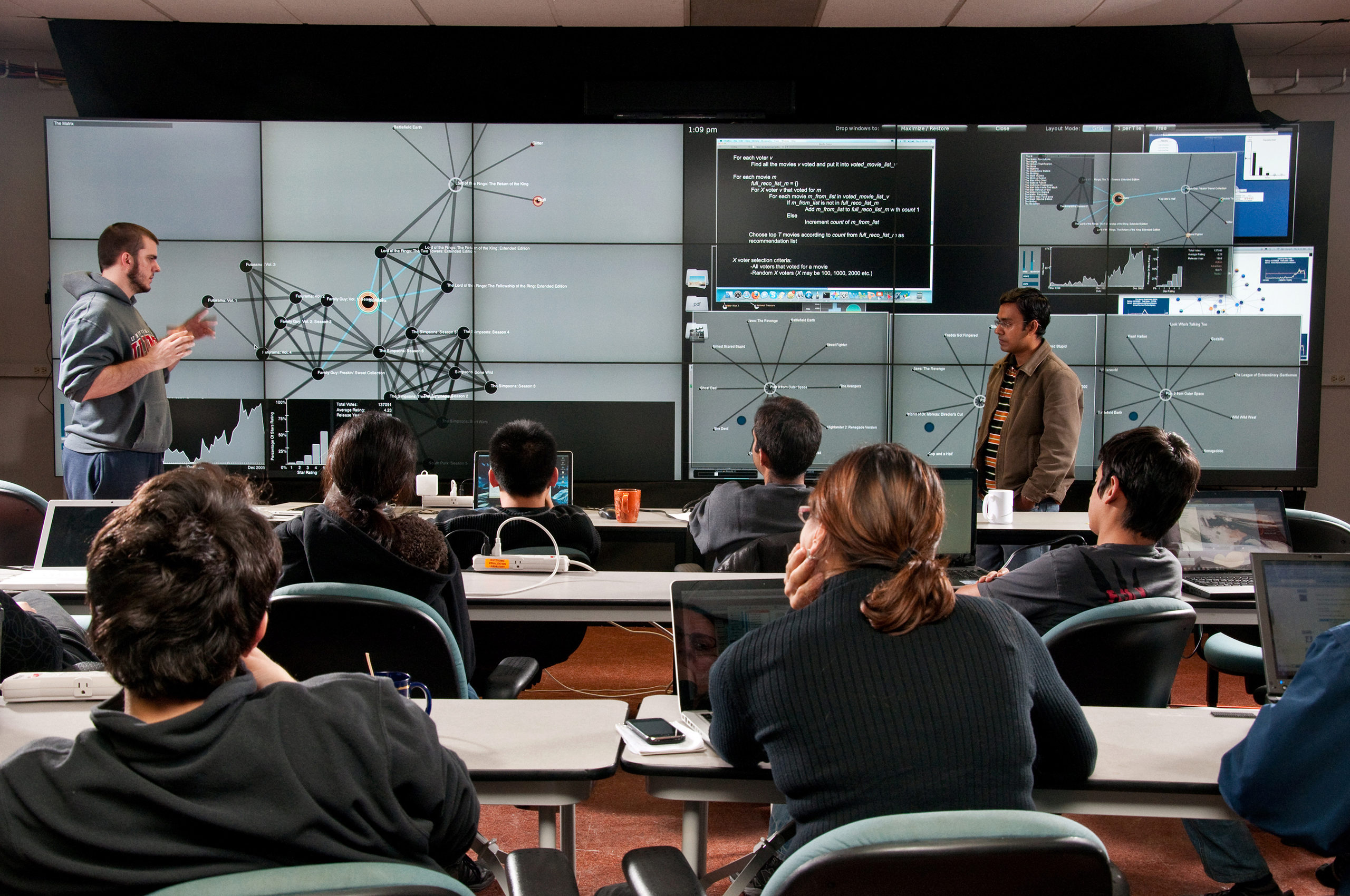Future World
December 5th, 2011
Categories: Applications, Education, MFA Thesis, MS / PhD Thesis, Software, User Groups, Visualization, VR, Data Science

Authors
Stuart LumanAbout
On a sunny August afternoon undergraduates are perusing the tables arranged around the East Campus, learning about clubs and groups to join, while still others are enjoying the warm day reading under the shade of trees. At the same time, 25 Electronic Visualization Laboratory graduate and undergraduate students have gathered in the lab’s Cyber-Commons on the second floor of UIC’s Engineering Research Facility to discuss such hard-core geek topics as tele-immersion, autostereoscopic 3-D imaging and large-scale computer display technologies.
The Cyber-Commons is a 1,000 square-foot, fluorescent- lit conference space within the lab’s warren of cinder- block offices and hallways. Students sit at two long grey tables, focused almost entirely on their laptops. Nine of them busily tweak PowerPoint slides for a presentation to peers on their latest research. Each of their computers also shares a portion of a giant 16-foot-long electronic computer display - made up of eight-tiled flat panel screens - at the front of the room.
Their computers wirelessly communicate with the wall via a system known as SAGE or Scalable Adaptive Graphics Environment, which was designed at EVL. The software currently runs display walls at more than 70 major institutions around the globe, including
NASA, Argonne National Laboratory, Beijing University, the Russian Academy of Sciences and King Abdullah University of Science and Technology in Saudi Arabia.
Resources
Citation
Stuart Luman, Future World, UIC Alumni Magazine, December 5th, 2011.